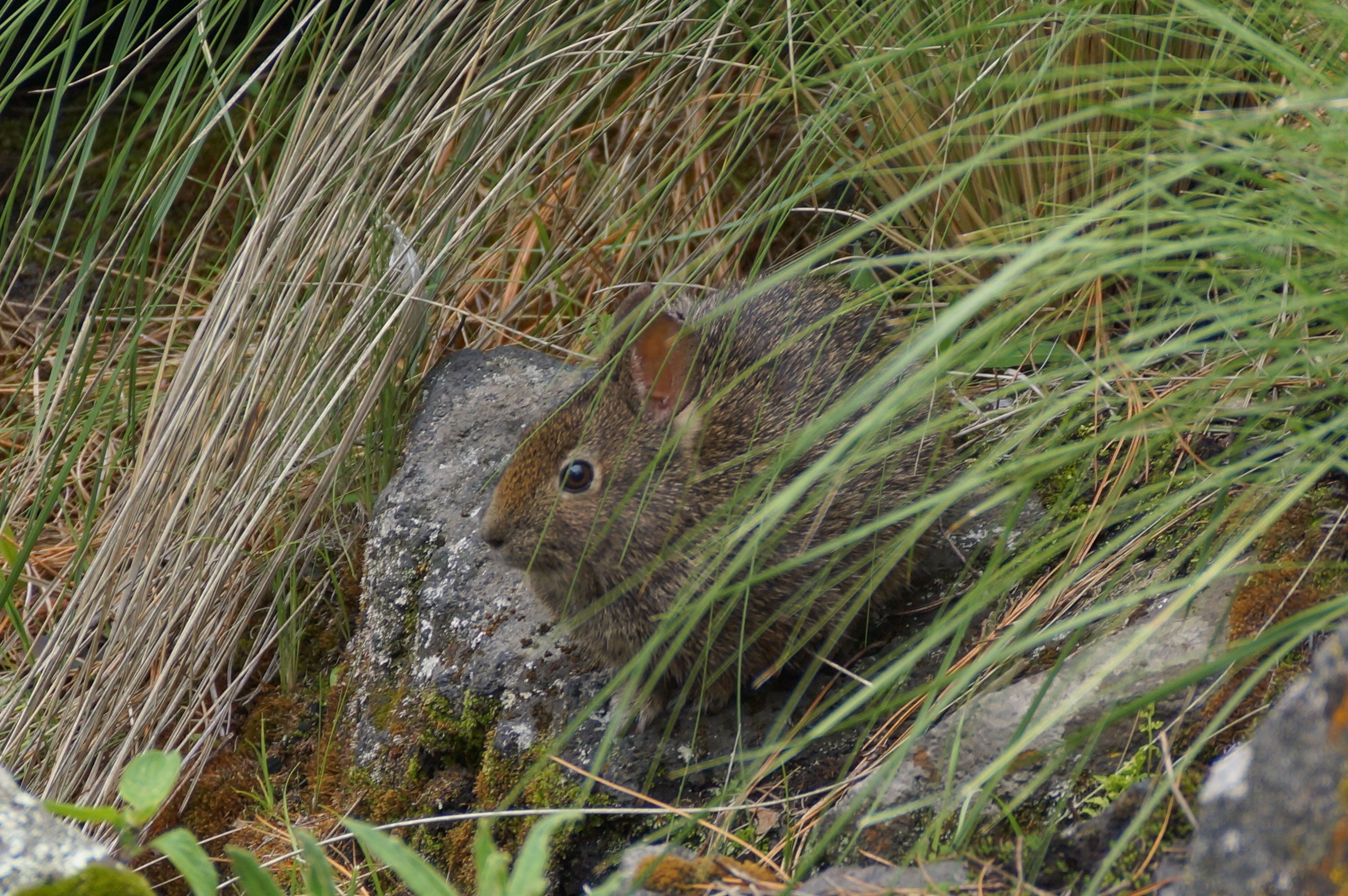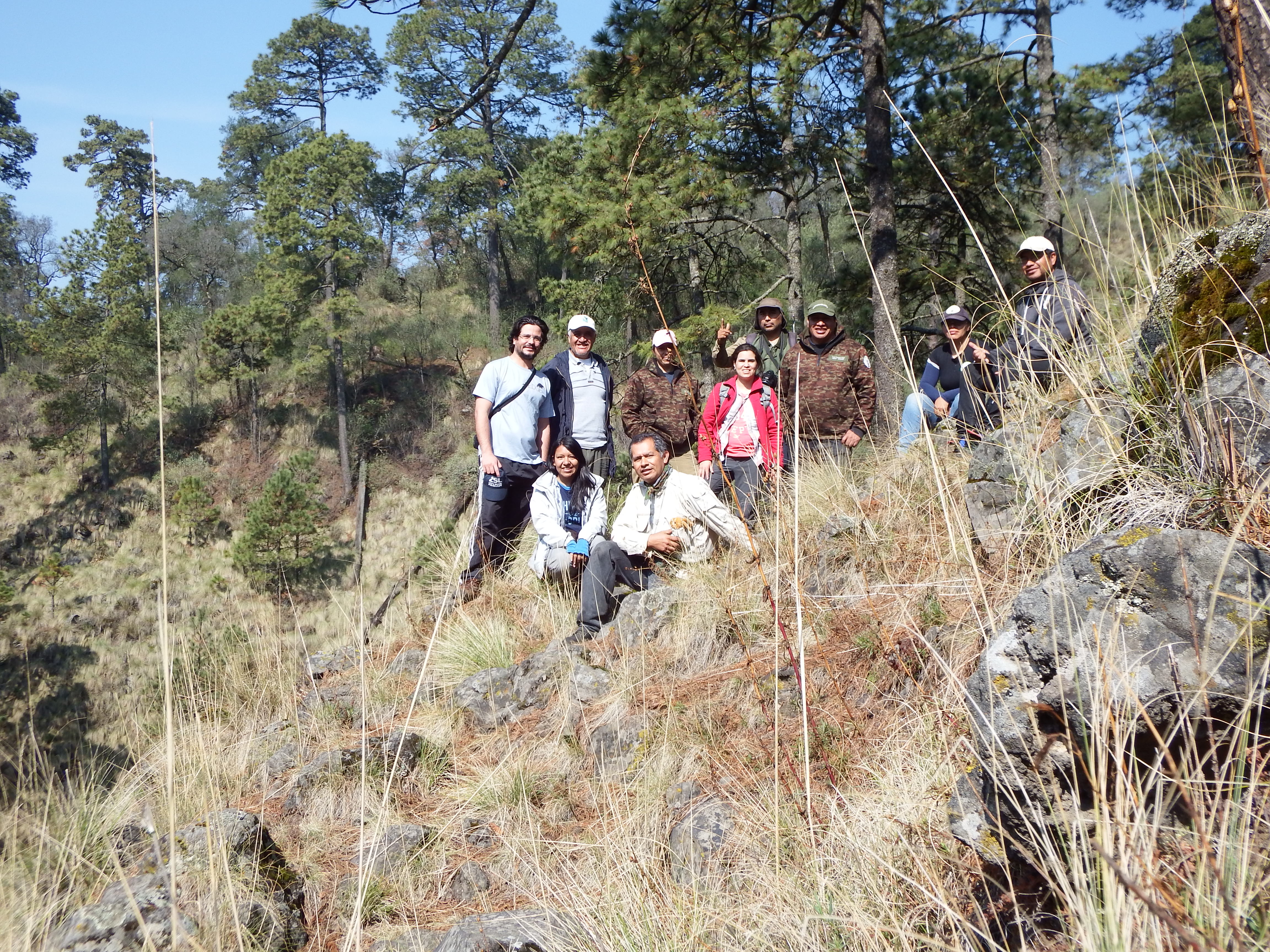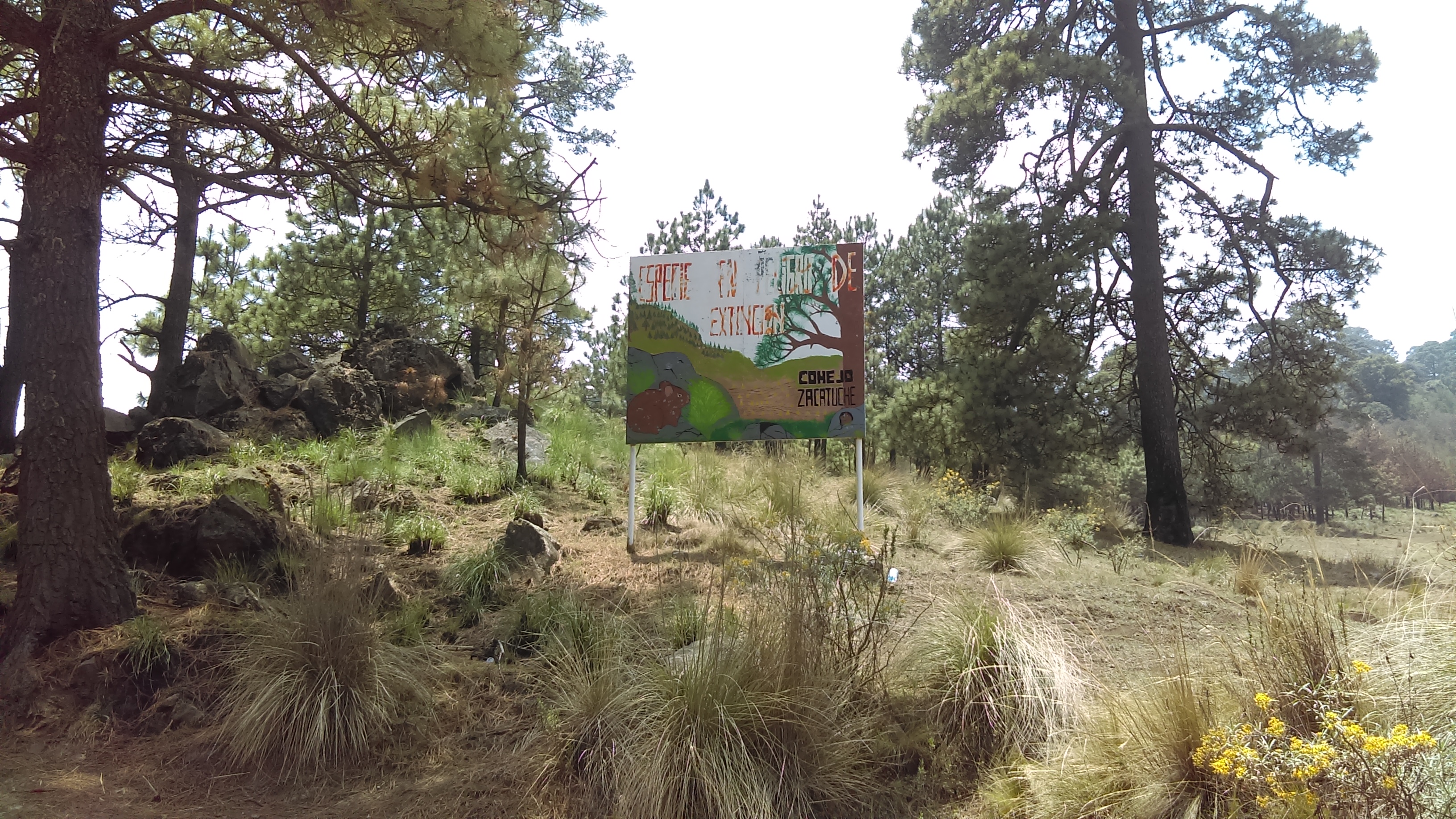Yajaira García is one of our National Geographic Photo Ark EDGE Fellows who is working hard to conserve the volcano rabbit (Romerolagus diazi) in Mexico. In this blog, she talks about the rabbit’s habitat and how native communities playing a vital role in helping to conserve the tiny rabbit.
Despite many rumours, the volcano rabbit has not disappeared from Mexico – not entirely at least. However, both its habitat and populations have seen steep declines putting it at risk of disappearing not only from Mexico, but the planet as a whole. According to fossil records found in Valsequillo, Puebla, its distribution has been reduced naturally by an increase in temperature caused by the end of the last glaciation since the end of the Pleistocene (in the last 12 thousand years). This isn’t the whole story however, as Yajaira explains:
“The real threat has been the increase in the local human population and the resulting changes in forest land use which act as indispensable habitat for the volcano rabbit. Agriculture, farming, deforestation, poaching, climate change and introduced exotic species are all contributing to the decline of the volcano rabbit.”
Despite the huge challenges it faces, this tiny rabbit fights on and can still be found in some forests like those of Milpa Alta forest, Mexico City.

Although there are rays of hope, Yajaira says there is still a lot of work to be done to protect the species:
“To date there is no updated study about volcano rabbit distribution but estimates place the rabbit’s habitat at 386.5 km2 in discontinuous patches in the Iztaccíhuatl and Popocatepetl volcanoes in the states of Mexico State and Puebla and in the Ajusco and Chichinautzin regions in Mexico City and Morelos. What we do know is that it is still at risk of extinction and that if we do not act soon it may disappear.”
Conservation action is often thought to be done from top down, with people mainly thinking about the effects of government and international agency conservation policies and actions. The volcano rabbit has been given protection, at both national and international levels, through policies that control human use of its habitat, trade and management. What doesn’t immediately spring to mind however, is the importance of community conservation work:
“Local people have great power over the conservation (or not) of the forests with the activities that they carry out day by day.”
Mexico City, one of the largest cities in the world with approximately 9 million inhabitants, is also the home of the volcano rabbit. This is because more than 50% of its territory has been categorized as land use conservation, which mainly covers the south of the city that hosts wooded areas. Although being vitally important habitat for the volcano rabbit, these conservation areas are also the home to the “pueblos originarios” the original peoples. These native communities have been established since before the Spanish conquest and work to preserve their traditional ways and customs related to the use and manage of the forest. In Yajaira’s eyes, these native populations have an important part to play in conservation efforts for the volcano rabbit:
“An example of a native community is Milpa Alta whose territory is within the conservation land of Mexico City. More than 50% of Milpa Alta has been designated as a forest zone, and its pine forests mixed with bunchgrasses are the main habitat of the volcano rabbit. This territory is also home of 12 original peoples, mainly of Nahuatl descent, who are part of the same community (called comuneros) and who own more than 80% of the land (collective property, communal property), which emphasizes the importance of local communities in the volcano rabbit´s conservation.”
As a result, Yajaira wants her conservation actions to include the comuneros. She intends to do this by including the Milpa Alta Biological Monitoring Brigade which consists of native people from the town of San Pablo Oztotepec. The group not only represent the actions that their community performs to conserve their forests, but also the contributions of ejidos, comuneros and native people generally. Although not previously recognised, these communities have become actively invested in the conservation of the volcano rabbit and its habitat. Sadly however, their actions are often limited by a lack of economic resources, institutional support and technical advice.

This native community interest in the volcano rabbit is something Yajaira values and wants to include and bolster in her conservation efforts:
“Our project has as main goal the active participation of the comuneros, represented by the Brigade, in volcano rabbit monitoring but also the environmental awareness of the community. I believe that only with the participation of multiple actors, associated with the use and management of the volcano rabbit and its habitat, can we achieve its conservation in the long-term. Without a doubt, the people (original people and citizens in general) have a fundamental role in this.”

All in all, with the help and enthusiasm of native communities, Yajaira is working hard to raise awareness and actively protect the volcano rabbit in Mexico. Keep up-to-date and find out more about her work and her EDGE species.

She has also contributed to a number of research projects at UNAM (Universidad Nacional Autonóma de México) focused on the biology and ecology of volcano rabbits. She has participated in initiatives with governmental institutions such as the National Commission of Protected Areas (CONANP), National Commission for the Knowledge and Use of Biodiversity (CONABIO) and General Management of Zoos and Wildlife (Dirección General de Zoológicos y Vida Silvestre DGZVS) and the academy to implement a monitoring system for volcano rabbits across their range.
Since 2012, she has worked as an environmental consultant in a non-governmental organization (NAME) where she has lead workshops to assess the local opinion and attitudes towards the modification and creation of protected areas by CONANP. Alongside her work on protected areas she has been measuring the impact of different incentive mechanisms to encourage sustainability in Mexico.
In 2018 Yajaira was awarded a NatGeo PhotoArk EDGE Fellowship. This award allows her to assess the population ecology of volcano rabbits at Milpa Alta, Mexico City and implement a communitarian survey. Yajaira sees the EDGE Fellowship as an opportunity to expand her knowledge of conservation biology, and to exchange ideas and experiences with people who are interested in the conservation of vulnerable species in different parts of the world.